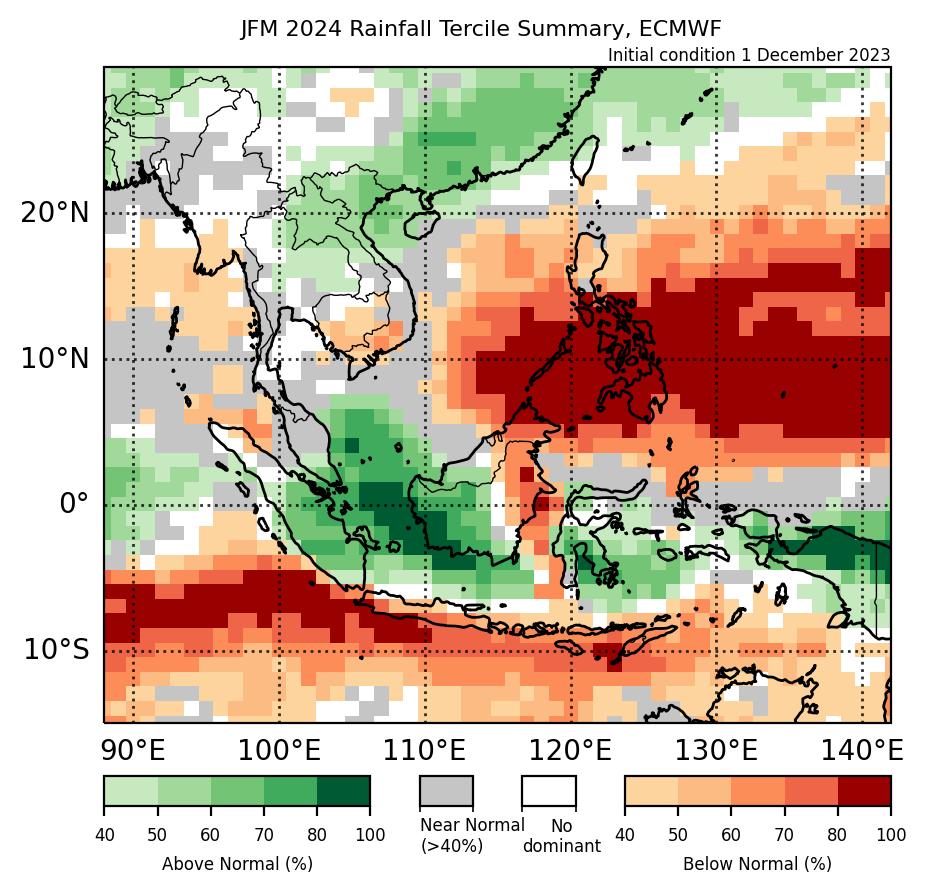Rainfall
Seasonal Rainfall Outlook: January-March 2024 (JFM)
Issued: 29 Dec 2023
For JFM 2024, models predict an increased chance of above-normal rainfall over parts of the equatorial region. Below-normal rainfall is predicted over parts of the northeastern, and southern Maritime Continent.
For JFM 2024, above-normal rainfall is predicted over the equatorial region, and parts of northern and central Mainland Southeast Asia, based on the multi-model ensemble (Figure 4). Over the equatorial region, the NCEP and UK Met Office models (Figures 1 and 3) show higher confidence for above-normal rainfall, as compared to the ECMWF model (Figure 2). Over Mainland Southeast Asia, the NCEP model shows largest extent for above-normal rainfall, followed by the UK Met Office and ECMWF models. However, it is the dry season for Mainland Southeast Asia. Models’ skill for above-normal rainfall is moderate to good for the equatorial region, and low to moderate for Mainland Southeast Asia.
Below-normal rainfall is predicted over the northeastern and parts of southern Maritime Continent based on the multimodel ensemble (Figure 4). The NCEP model (Figure 1) shows below-normal rainfall mainly over northeastern Maritime Continent, whereas the ECMWF and Met Office models (Figures 2 and 3) show below-normal rainfall also over the southern Maritime Continent, in addition to above mentioned regions. The model skill is moderate to good for northeastern Maritime Continent but low to moderate over the southern Maritime Continent.

Figure 1: Rainfall tercile summary predictions of NCEP model for JFM 2024 (contains modified Copernicus C3S information).

Figure 2: Rainfall tercile summary predictions of ECMWF model for JFM 2024 (contains modified Copernicus C3S information).

Figure 5: Average climatological rainfall's lower tercile boundary for JFM based on CHIRPS (Reference period: 1991-2020).

Figure 6: Average climatological rainfall's upper tercile boundary for JFM based on CHIRPS (Reference period: 1991-2020).
The qualitative outlook is assessed for the region in general. For specific updates on the national scale, the relevant ASEAN National Meteorological and Hydrological Services should be consulted.